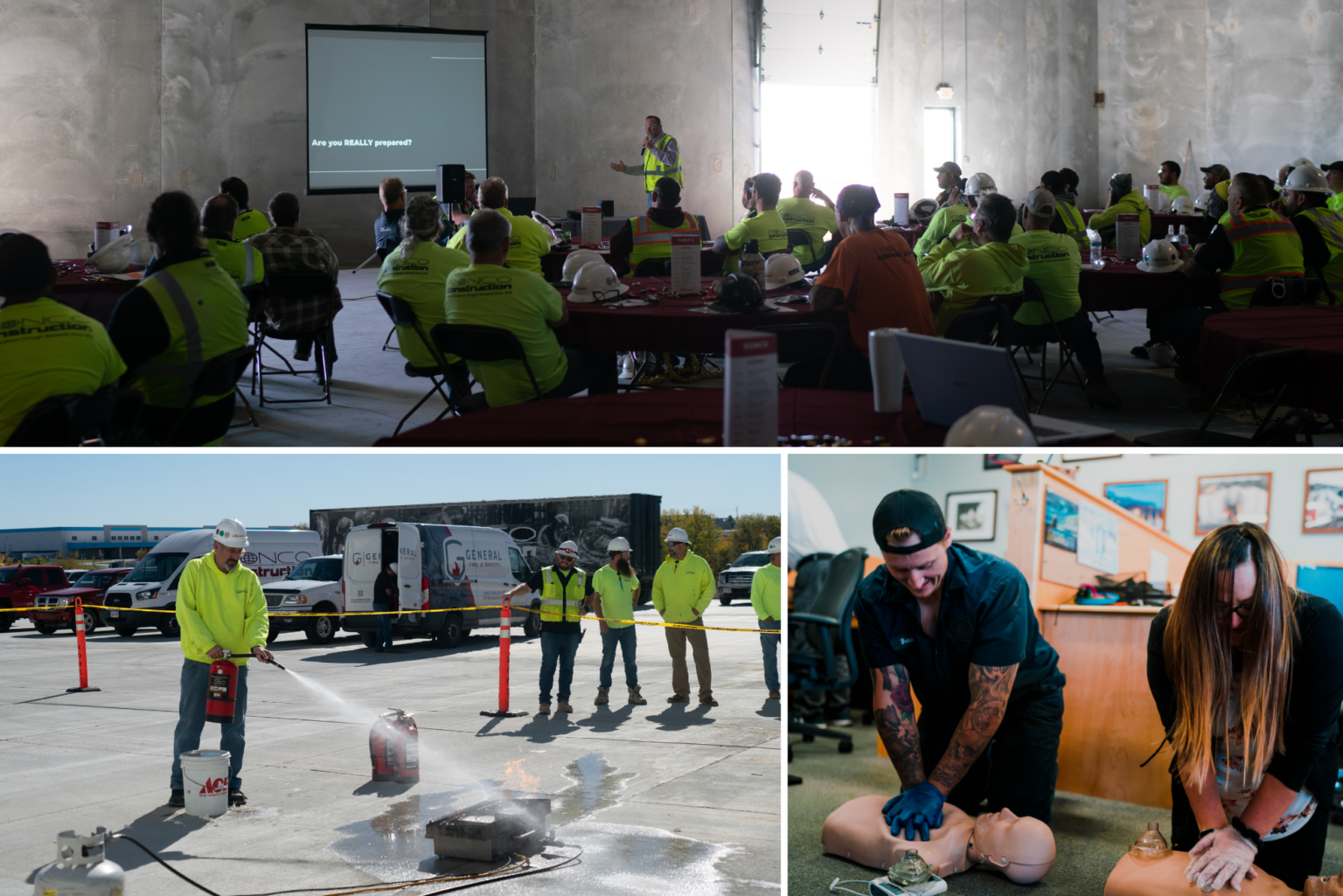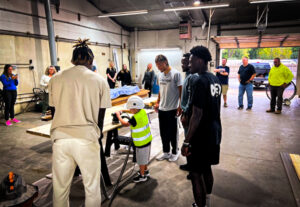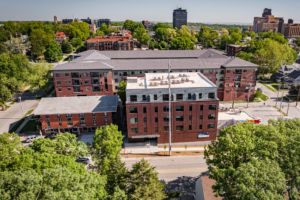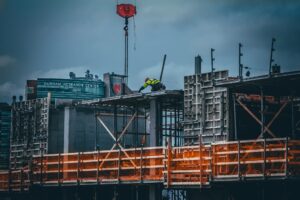How Ronco Construction ensures safety on jobsites.
In the construction industry — where progress and productivity intersect with risk and responsibility — safety stands as an unwavering cornerstone. Construction work attributes to the second most workplace deaths of all industries. Every year, about 1% of workers suffer an injury that’s serious enough to miss work. It’s a dangerous line of work.
But, because of the dedication of those in industry to keeping safety top of mind and organizations like OSHA who set standards, these numbers have been in decline— from 10.9 injury incidents per 100 workers in 1972 to 2.7 per 100 in 2022 and 38 deaths a day in 1970 to 15 per day in 2022.
June is dedicated to recognizing and reinforcing safety procedures across all industries through the National Safety Council. While dedicated months and weeks are great reminders throughout the year, at Ronco, every day is dedicated to safety. That’s why safety — along with integrity and teamwork which go hand-in-hand with safety — are the core values of how Ronco operates. Here are a few of the proactive measures that define how Ronco safeguards every individual on our jobsites.
Before Work Begins
Prior to any equipment running on a jobsite, safety planning and protocols are completed. A risk assessment is conducted to identify potential hazards includes evaluating the environment, planned equipment and project logistics. During this pre-installation phase, Ronco meets with a project’s subcontractors to discuss the project, outline expectations and identify and address concerns to mitigate any risks upfront.
Mike Langford, Ronco’s chief operating officer and safety director, explains how asking key questions like, “what are ways we can make the jobsite safe, and how do we implement it,” are key to our proactive process.
“From a job hazard analysis and permits to overall identification and implementation of protocols, it’s a four-tiered approach to making sure from beginning to end, it’s safe.”
From day one of employment, every Ronco employee completes a safety orientation. This outlines the expectation on our jobsites and provides an overview of potential hazards and awareness. And before a field worker sets foot on a Ronco jobsite, they complete additional safety trainings and qualifications as well as jobsite orientations. This ensures workers know Ronco’s safety guidelines and how to approach any tool or machinery. We also require all subcontractors and their staff to review and agree to our safety standards prior to work beginning.
Continuous Safety Awareness
Training is not a one-and-done-type event but an ongoing commitment. Employees undergo daily safety inspections managed by Ronco’s site superintendent. We also host monthly safety talks, weekly toolbox talks on all jobsites and an annual company-wide safety stand-down event. We encourage employees to receive training for certifications like the OSHA 10-hour, 30-hour or higher throughout their career at Ronco.
“We’re constantly discussing safety and providing a regular level of training or awareness. We eliminate any roadblocks for someone who wants to receive additional training to ensure they can complete it,” Langford said.
With safety embedded so deeply at Ronco, it’s part of the company culture. We empower employees to prioritize safety and encouraged to speak up about any concerns or hazards they observe. Using the “See Something. Say Something” program, anyone within Ronco can stop working or work if they feel there’s something unsafe happening or believe it doesn’t follow Ronco’s identified guidelines. A See Something Say Something notification is sent directly to the executive leadership team to be addressed immediately.
“We want everyone to go home every day. That’s our primary focus,” Langford said.
Maintaining safety standards is hard, tedious work. But it has tangible ROI. Because of our team’s dedication to safety, we’ve achieved over one million hours without a lost time incident and an Experience Modifier Rating (EMR) rating of .64.
Building on the Safety Program
With an office and projects now in Kansas City, our safety program, standards and expectations are along for the ride.
“It’s the enforcement of the culture and that “safety culture” mindset”, explains Langford. “It has to be organic from the start, and it’s almost must become contagious,” Langford said. “That is just how we operate daily.”
To make sure out-of-state jobsites are maintaining company standards, regular trips are necessary to check and monitor jobsites. Langford, as the COO and safety director, makes sure he sets time in his schedule to visits jobs to ensure they’re following our process.
“The short answer to how we stay consistent [on out-of-state jobs] would be that I’m there weekly,” Langford jokes. “But it’s also about finding the right people, who share the same vision about safety that helps ensure success. I can’t be on every job, every day, so it’s about finding individuals who can look at things through my eyes. And we’re doing that with our newer team members.”
By implementing protocols, prioritizing ongoing training and committing to continuous improvement, we ensure every worker returns home safely at the end of each day. This commitment not only enhances workplace safety, but also fosters a resilient and reputable construction industry.
“It’s a lot of eyes, a lot of checks and balances, to make sure that we’re all working safely so that we can go home to our families every night,” Langford said.
From groundbreaking to the final touches of completion, our commitment to safety permeates every phase of our projects. It’s not merely a checkbox on a list of requirements, but a guiding principle embedded in our company’s culture. The framework mitigates risk, protects our workforce and upholds the highest standards of health and safety.





